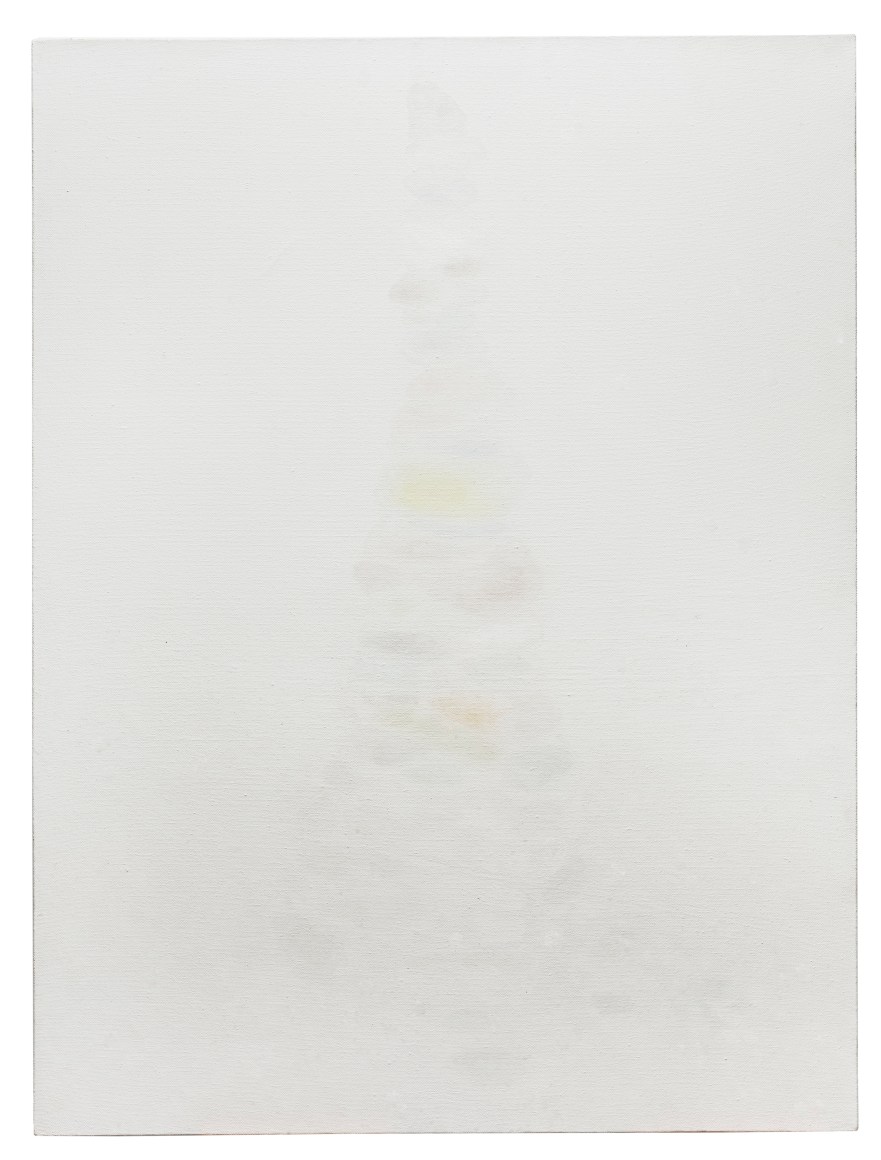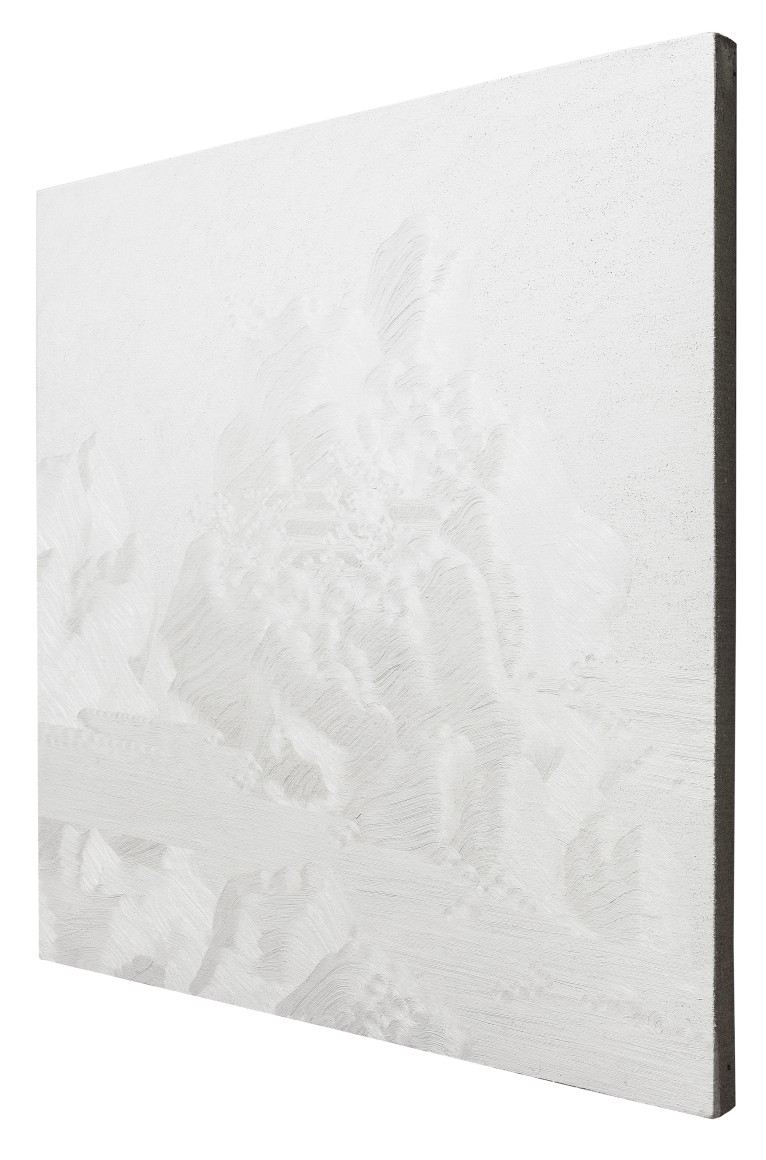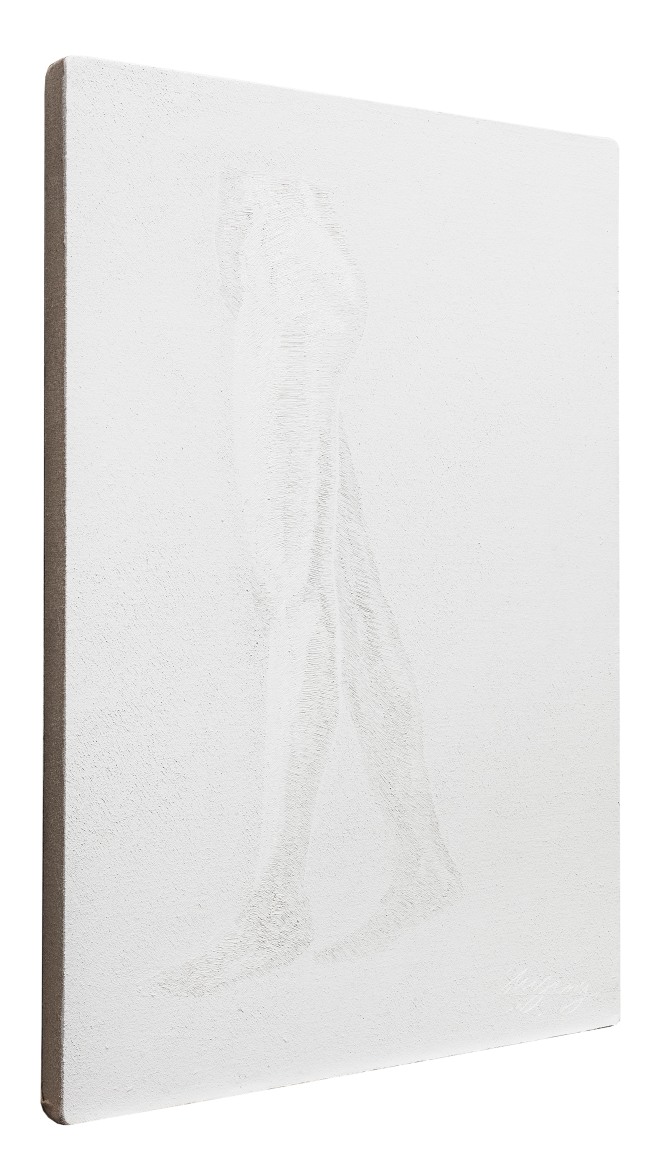Chambers Fine Art is pleased to announce the opening of Shi Jing & Wu Didi on January 8, 2015.
For both painters nature is the source of inspiration, although they approach it from widely different perspectives. Shi Jing is inspired by views of the world from outer space, by vast perspectives, mountain ranges and impressive landscapes, but is reluctant to approach these themes in a traditional way. Wu Didi, on the other hand, focuses on the constituent parts of the natural world: weeds, stones, and insects, for example, and paints them in minute detail on blank canvases. The dialogue between the two artists is a stimulating one.
Shi Jing has evolved a painterly method that evokes the surprise we experience each time we see nature in all its majesty. At first glance his paintings appear to be monochromatic, whether white or black, but as the spectator changes his or her position, planets, mountains, majestic buildings and sometimes human faces gradually appear and disappear. Achieved through minute changes in the direction and thickness of his brushstrokes, these mirage-like visions are deeply meaningful, providing insights into the impermanence of human life and the passing of time. For the current exhibition, Shi Jing has painted a new series of white canvases in which the inspiration is not so much nature itself as it is nature perceived through Chinese landscape painting.
In complete contrast are the poetic nature studies of Wu Didi in which the absence of context leads to concentration on the specificities of natural forms that are generally overlooked. In this case, her focus is on bamboo. She has written of her quest to investigate the nature of bamboo through actions such as breaking, twisting and bending and wishing to convey its toughness and resilience. Further emphasizing the strength of the bamboo are the insects that add motion to her otherwise static compositions.
Both artists approach Chinese traditions and themes, whether landscape in the case of Shi Jing or motifs such as bamboo and insects in the case of Wu Didi, in a highly personal manner that shows the continuing appeal of this time-honored subject matter.
Shi Jing was born in Dehongzhou, Yunnan province in 1971. He lives and works between Beijing and Yunnan. Chambers Fine Art has been working with the artist for the past six years with works included in Blog It: New Wave of New Wave (2008 Chambers Beijing, Chambers New York) and Dream Or Reality-Chinese Art Today(2008 Amsterdam). Shi Jing has been widely exhibited in China including a solo show in the Today Art Museum (2009) and the Nanjing and the Guizhou Triennials (both 2008). Internationally, his work appeared in China Now, ESSL COLLECTION, Vienna (2006), Grounding Reality, Seoul Arts Center, Seoul, Korea (2005) and Mahjong: Contemporary Chinese Art from the Sigg Collection, Kunstmuseum Bern, Cologne, Germany.
Wu Didi was born in Chong Qing in 1976. She graduated from the Sichuan Academy of Fine Arts High School in 1996, and received her BA degree from Central Academy of Fine Arts, Beijing. In 2004, she earned her Master’s Degree from CAFA Oil Painting Department. She currently teaches at Central Academy of Dramatic Art. This is her first exhibition at Chambers Fine Art.
这次联展中,两位艺术家的灵感都来源于大自然,然而他 们探索这一主题的角度迥然不同。史晶1971年生于云南德 宏州,吴笛笛1976年生于重庆。史晶的灵感来自从外太空 鸟瞰世界的景象及层峦叠嶂的壮丽景观,但他并不愿意用 传统的手法来表现这些主题。与之相比,吴笛笛则更专注 于自然世界的微观组成,比如杂草、岩石、昆虫等等,并 将这些细节充分展现在画布上。两人的作品在同一展览中 形成了一个对话,可谓是相得益彰。
史晶的绘画手法总是带给我们惊喜,使观者通过这种创作 方法来见证大自然的雄伟。乍一看,他的油画色调单一, 或是一片漆黑或是一片雪白。而当观者转换其视角,星 球、山峦、雄伟的建筑或人像便会映入眼帘,时隐时现。 艺术家通过对笔触方向和力度的细微控制创作出这些奇迹 般的景象。这些景象具有深层的内涵,它们洞悉人世的无 常,光阴的流逝。为了本次展览,史晶创作了一系列新的 白色作品。这组作品的灵感与其说是来源于自然本身,不 如说是来自中国古代山水画对大自然的展现。另一新系列 的暗色作品则借助每幅作品所特别配置的LED灯光装置, 呈现出类似星球或者从外太空所看到的地球的景象。
与之截然相反,吴笛笛对自然的探索则富有诗意,其作品 省略了背景,于是将我们的视线引领到常常被忽视的自然 具体形态之中。本次展览作品中,她的创作重点是竹子。 通过对竹子特性的研究,包括折断、扭转和弯曲,表现出 竹子的弹性及韧性。
史晶的作品在中国也已被广泛展出,包括其在今日美术馆 的个展(2009年),以及南京三年展和贵州三年展(2008 年)。在国际上,其作品也入选了《麻将—希克中国当代 艺术收藏展》(2005年于德国)。



